Compression tests
Type of resources
Topics
Keywords
Contact for the resource
Provided by
Years
Formats
Update frequencies
-
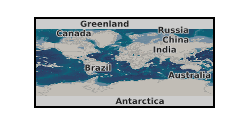
Collection of data from the PhD Thesis "Thermo-mechanical loading of intact rock and discontinuities" by J Woodman. This collection of data includes raw logged .csv datafiles of uniaxial compression testing and triaxial compression testing on intact synthetic compositions, as well as intact and discontinuous specimens of Thornhill Rock and Midgley Grit at both ambient temperatures, and temperatures up to 100°C.
-
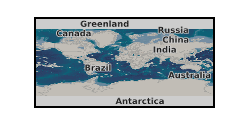
The mechanics of olivine deformation play a key role in long-term planetary processes, including the response of the lithosphere to tectonic loading or the response of the solid Earth to tidal forces, and in short-term processes, such as post-seismic creep within the upper mantle. Previous studies have emphasized the importance of grain-size effects in the deformation of olivine. Most of our understanding of the role of grain boundaries in the deformation of olivine is inferred from comparison of experiments on single crystals to experiments on polycrystalline samples, as there are no direct studies of the mechanical properties of individual grain boundaries in olivine. In this study, we use high-precision mechanical testing of synthetic forsterite bicrystals with well characterized interfaces to directly observe and quantify the mechanical properties of olivine grain boundaries. We conduct in-situ micropillar compression tests at high-temperature (700°C) on bicrystals containing low-angle (4• tilt about [100] on (014)) and high-angle (60• tilt about [100] on (011)) boundaries. During the in-situ tests, we observe differences in deformation style between the pillars containing the grain boundary and the pillars in the crystal interior. In the pillars containing the grain boundary, the interface is oriented at ∼ 45° to the loading direction to promote shear. In-situ observations and analysis of the mechanical data indicate that pillars containing the grain boundary consistently support elastic loading to higher stresses than the pillars without a grain boundary. Moreover, the pillars without the grain boundary sustain larger plastic strain. Post-deformation microstructural characterization confirms that under the conditions of these deformation experiments, sliding did not occur along the grain boundary. These observations support the hypothesis that grain boundaries are stronger relative to the crystal interior at these conditions. This data set is associated with the pre-print manuscript with the DOI: 10.22541/essoar.167979601.17867144/v1
-
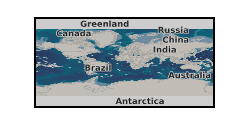
This dataset shows both the micro-scale mechanisms and acoustic response involved in shear failure of a deforming porous rock. To our knowledge, this is the first such dataset to combine simultaneous acoustic measurements and x-ray tomography imaging. It comprises a time-series of 3D in-situ synchrotron x-ray microtomography (µCT) volumes showing a Clashach sandstone sample (CL10) undergoing triaxial deformation to failure under a constant acoustic emissions (AE) event rate. Use of a constant AE event rate slowed down the failure process after peak stress, enabling shear failure to be captured in unprecedented spatio-temporal detail by the µCT volumes. These volumes are accompanied by the local incremental 3D strain fields and simultaneously acquired waveforms from acoustic emissions and ultrasonic velocity surveys, as well as mechanical bulk stress and strain. These data are fully explained in Cartwright-Taylor et al. Seismic events miss important grain-scale mechanisms governed by kinematics during shear failure of porous rock, in review at Nature Communications. We also include an equivalent time-series of the same data types showing a second Clashach sandstone sample (CL04) undergoing triaxial deformation to failure, this time under a constant strain rate where failure happened abruptly, shortly after peak stress. Both collections were acquired in-situ on the beamline I12-JEEP at the Diamond Light Source, Didcot, UK, in September 2019. Each 3D µCT volume of the sample is contained in a .zip file labelled with the sequential scan number. Each volume comprises reconstructed 16-bit grey-scale data in a sequence of 2D image files (.tif), each numbered according to the depth at which it lies within the sample volume. The file dimensions are pixels, with an edge length of 7.91 µm. Two further .zip files contain the incremental 3D volumetric and deviatoric strain fields, obtained from digital volume correlation between neighbouring µCT volumes. Each strain field consists of a 32-bit 3D image file (.tif) in pixels with an edge length of 316.4 µm, labelled with its scan increment. Also included are (i) .csv files, containing the mechanical stress and strain time-series, the time and mechanical data at which each µCT volume was scanned, and the acoustic emissions event rate data, and (ii) .zip files containing times and waveforms for the acoustic emissions and ultrasonic velocity surveys as .ascii files. The .zip and .xlsx files are labelled with the sample name, the data type (grey-scale, strain-volumetric, strain-deviatoric, seismic, mechanical, mechCT, eventrateAE) and the sequential scan number (grey-scale only) according to the following convention: sample_datatype_scan#. We acknowledge Diamond Light Source for time on beamline I12-JEEP under proposal MG22517. This work is supported by the UK's Natural Environment Research Council (NERC) through the CATFAIL project NE/R001693/1 Catastrophic failure: what controls precursory localisation in rocks?
-
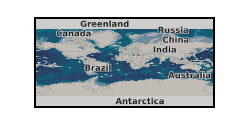
P* data obtained through hydrostatic loading experiments, using triaxial experimental apparatus, as well as yield curve data obtained through differential loading tests, prior to the discovery of P* for different synthetic sandstones. The methodology used was taken from Bedford et al. (2018, 2019). Grain size analysis data obtained using a Beckman Coulter LS 13 320 laser diffraction particle size analyser. Particle analysis was conducted on five different synthetic sandstones with different grain size distributions. Secondary electron and backscatter electron SEM images for natural and synthetic sandstones. Secondary electron images were stitched together to form a whole core image. They were then binarised following the methodology of Rabbani and Ayatollahi. (2015). Hexagon grid size data used to obtain the correct grid size for performing porosity analysis across an mage using Fiji software (Brown, 2000). Bedford, J. D., Faulkner, D. R., Leclère, H., & Wheeler, J. (2018). High-Resolution Mapping of Yield Curve Shape and Evolution for Porous Rock: The Effect of Inelastic Compaction on 476 Porous Bassanite. Journal of Geophysical Research: Solid Earth, 123(2), 1217–1234. Bedford, J. D., Faulkner, D. R., Wheeler, J., & Leclère, H. (2019). High-resolution mapping of yield curve shape and evolution for high porosity sandstone. Journal of Geophysical Research: Solid Earth. Brown, G. O., Hsieh, H. T., & Lucero, D. A. (2000). Evaluation of laboratory dolomite core sample size using representative elementary volume concepts. Water Resources Research, 36(5), 484 1199–1207. Rabbani, A., & Ayatollahi, S. (2015). Comparing three image processing algorithms to estimate the grain-size distribution of porous rocks from binary 2D images and sensitivity analysis of the grain overlapping degree. Special Topics & Reviews in Porous Media: An International Journal, 6(1).
-
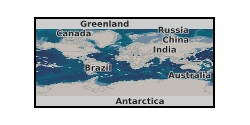
This collection comprises two time-series of 3D in-situ synchrotron x-ray microtomography (μCT) volumes showing two Ailsa Craig micro-granite samples (ACfresh02 and ACHT01) undergoing triaxial deformation. These data were collected in-situ at the PSICHE beamline at the SOLEIL synchrotron, Gif-sur-Yvette, France in December 2016 (standard proposal 20160434) and are fully explained in Cartwright-Taylor A., Main, I.G., Butler, I.B., Fusseis, F., Flynn M. and King, A. (in press), Catastrophic failure: how and when? Insights from 4D in-situ x-ray micro-tomography, J. Geophys. Res. Solid Earth. Together, these two time-series show the influence of heterogeneity on the micro-crack network evolution. Ailsa Craig micro-granite is known for being virtually crack-free. One sample (ACfresh02) remained as-received from the quarry until it was deformed, while the second (ACHT01) was slowly heated to 600 degC and then slowly cooled prior to deformation in order to introduce material disorder in the form of a network of nano-scale thermal cracks. Thus these two samples represent two extreme end-members: (i) ACfresh02 with the lowest possible (to our knowledge) natural pre-existing crack density, and so is a relatively homogeneous sample and (ii) ACHT01 with a thermally-induced nano-crack network imprinted over the nominally crack-free microstructure, and therefore has increased heterogeneity relative to ACfresh02. Each 3D μCT volume shows the sub-region of each sample in which the majority of damage was located and has three parts. Part one is reconstructed 16-bit greyscale data. Part two is 8-bit binary data showing individual voids (pores and micro-cracks) in the dataset after segmentation. Part three is 32-bit data showing the local thickness of each void, as in Cartwright-Taylor et al. (in press) Figures 4 and 5. Each part is a zip file containing a sequence of 2D image files (.tif), sequentially numbered according to the depth (in pixels, parallel to the loading axis) at which it lies within the sample volume. File dimensions are in pixels (2D), with an edge length of 2.7 microns. Each zip file is labelled with the sample name, the relevant letter for each 3D volume as given in Cartwright-Taylor et al. (in press) Tables 3 and 4, part 1, 2 or 3 (depending whether the data are greyscale, binary or local thickness respectively), the differential stress (MPa) on the sample, and the associated ram pressure (bar) to link with individual file names. The following convention is used: sample_letter_part_differentialstress_rampressure_datatype. Also included are (i) two spreadsheets (.xlsx), one for each sample, containing processing parameters and the mechanical stress and strain at which each volume was scanned, and (ii) zip files containing .csv files containing measurement data for the labelled voids in each volume. N.B. void label numbers are not consistent between volumes so they can only be used to obtain global statistics, not to track individual voids.
-
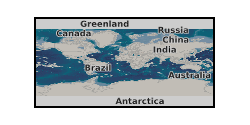
These data contain time series of stress, strain, confining pressure, pore pressure, pore volume, permeability and elastic wave velocities of samples of Purbeck Limestone deformed under hydrostatic and triaxial conditions at room temperature. All samples were saturated with decane as pore fluid.This dataset is used and fully described/interpreted in the paper: Brantut, N., M. Baker, L. N. Hansen and P. Baud, Microstructural control of physical properties during deformation of porous limestone, submitted to J. Geophys. Res.
-

This dataset contains raw (clean but not interpreted) triaxial compressive strength data of tests conductive at elevated pressure and temperature as outlined in "Vannucchi, P., Clarke, A., de Montserrat, A., Ougier-Simonin, A., Aldega, L., & Morgan, J. P. (2022). A strength inversion origin for non-volcanic tremor. Nature Communications, 13(1), 2311. https://doi.org/10.1038/s41467-022-29944-8". The data is provided in a .zip folder containing the files of 5 experiments that are accompanied by a README file for introduction. Files format is Microsoft Excel Worksheet (.xlsx) and data are tabulated. Each file contains the corresponding relevant sample’s details, and each column of data is clearly labelled, units included. For each experiment, time, axial force, axial displacement, axial stress, confining displacement, confining pressure, axial strain A and B, axial average strain, circumferential extensometer, circumferential strain, volumetric strain, internal temperature, and axial delta P were recorded. Triaxial testing was undertaken using the MTS 815 servo-controlled stiff frame inside a vessel capable of a confining pressure up to 140 MPa at the Rock Mechanics and Physics Laboratory, British Geological Survey, UK. The confining cell is fitted with external heater bands and utilizing utilizes cascade control from internal and external thermocouples (accurate to ± 0.5°C). An initial axial pre-load of 2.3 kN was applied, to ensure a stable contact and alignment of the platens. The confining pressure vessel was then closed and filled with mineral oil confining fluid. The axial pre-load was maintained whilst the confining pressure was applied at 2 MPa/min to 60 or 120 MPa; these values were chosen to approximately bracket the pressures at the up-dip limit of seismic nucleation, corresponding to 2 – 4 km depth (Arroyo et al., 2014). At this point, whilst held in axial force and confining pressure control, the rig was heated at 2°C/min to 60°C to approximate the average temperature conditions at the depth of the up-dip limit of seismic nucleation (Harris and Spinelli, 2010). The samples were then left for approximately 1 hour allowing thermal equilibrium to be reached throughout the confining fluid and the samples. Once stable, axial loading was initiated in constant axial strain rate control at a rate of 5.0 x 10-6 s-1 until macroscopic failure occurred or a significant amount of post peak-stress axial strain was recorded (between 2% and 5%). We note that one test was conducted at the higher temperature of T=120°C with a result within 2.5% of the strength at T=60°C (Table 1). As this is below the expected sample-to-sample variability, no further temperature studies were conducted. The axial load, axial load actuator displacement, axial stress (s1), differential stress (Q=s1 - s3), confining pressure Pc (= s2= s3), confining pressure actuator displacement, axial strain (eax), circumferential strain (ecirc) and temperature were monitored throughout at sampling frequencies of 1s and 0.5kN. File names are: YYYY-MM-DD_LabProjectNumber_SiteName-SampleNumber
-
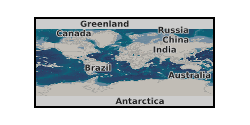
We examine the role of cement on compaction band formation by performing triaxial tests on three sandstones, Bentheim, Castlegate and a synthetic sandstone which possess very similar porosities (~26-29%) and grain sizes (~230-300 µm), but which are cemented differently, with syntaxial quartz overgrowths, clay, and amorphous quartz cement respectively. Each sample was taken to 5% axial strain at a starting effective stress equivalent to 85% of its hydrostatic yield (P*) value, which were identified from yield under hydrostatic loading. These data for the 3 samples are presented as matlab data files. Post-deformation, each of the 3 cores underwent backscatter SEM and subsequent image analysis to examine any localised variations in porosity and grain size. These data are presented as csv files. Discrete bands form in each of the 3 sandstones but are distributed differently across each sample. Our results suggest that cement type plays a significant role in the micromechanics of deformation within each of the sandstones, which in turn, determines where the compaction bands nucleate and develop. These results may provide a starting point to investigate the role of cement on compaction localisation further.
-
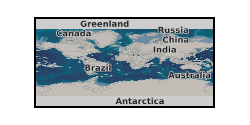
This dataset contains raw experimental triaxial testing data as outlined in "Castagna, A., Ougier‐Simonin, A., Benson, P. M., Browning, J., Walker, R. J., Fazio, M., & Vinciguerra, S. (2018). Thermal damage and pore pressure effects of the Brittle‐Ductile transition in Comiso limestone. Journal of Geophysical Research: Solid Earth, 123(9), 7644-7660.s, http://dx.doi.org/10.1029/2017JB015105". The data is provided in a .zip folder containing the files of 16 experiments that are accompanied by a README file for introduction. Files format is Microsoft Excel Worksheet (.xlsx) and data are tabulated. Each file contains the corresponding relevant sample’s details, and each column of data is clearly labelled, units included. For each experiment, time, radial and axial pumps volume displacements and pressures, top and bottom pore fluid pumps volume displacements and pressures, internal temperature, LVDT signals were recorded. Twenty right cylindrical samples of ‘Comiso’ limestone (Ragusa Formation; Sicily) were tested in triaxial compression at a range of confining pressures simulating depths of 290 m, 620 m, 1.2 km, and 2.0 km respectively, assuming an average density of the over-burden load of 2470 kg/m3. Prior to strength test, each sample was either oven dried (ca. 12 hours at 85 °C followed by cooling in a desiccator for 1 hour) or water saturated (samples in distilled water under vacuum for 24 hours). A subset of these samples has also been thermally treated at 150, 300, 450 and 600oC to induce thermal cracking prior to the mechanical testing. All tests were conducted at 10-5 s-1 axial strain rate in assumed drained conditions when relevant, and at room temperature. For saturated tests, the initial loading was applied in two steps, first by increasing Pc hydrostatically (σ1=σ2=σ3) until the desired confining pressure was reached, and then introducing pore fluid pressure, as per the functionality of the experimental set-up. The experiments were conducted by Drs A. Castagna, M. Fazio and P. Benson using the Snachez triaxial cell at the Rock Mechanics Laboratory of the University of Portsmouth. All responsible for the collection and initial interpretation of the data. Only 17 experiments are reported in this set of data; the missing 3 datasets are believed to be only available on the local computer storage of the triaxial apparatus used at that time.
-
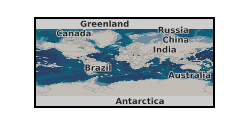
This dataset contains experimental hydrostatic testing data with ultrasonic surveys and acoustic emission data as outlined in "Panza, E., Agosta, F., Rustichelli, A., Vinciguerra, S. C., Ougier-Simonin, A., Dobbs, M., & Prosser, G. (2019). Meso-to-microscale fracture porosity in tight limestones, results of an integrated field and laboratory study. Marine and Petroleum Geology, 103, 581-595, https://doi.org/10.1016/j.marpetgeo.2019.01.043". The data is provided in a .zip folder containing 11 files, with 10 files for each mechanical tests and 1 containing all the geophysical data recorded and calculated; accompanied by a README file for introduction. Files format is Microsoft Excel Worksheet (.xlsx) and data are tabulated. Each file contains the corresponding relevant sample’s details, and each column of data is clearly labelled, units included. For each experiment, mechanical dataset recorded time, axial force, axial displacement, axial stress, confining displacement, confining pressure, axial strains A and B, circumferential extensometer, and internal temperature. Physical dataset recorded sample’s dimensions, density, compressional (P) wave arrival time and shear (S1, S2) wave arrival times; details of calculated velocities and elastic parameters are also given. Ten right cylindrical samples of limestone from the Altamura Formation sampled at Pontrelli Quarry were tested in hydrostatic compression at a range of confining pressures (Pc = σ1=σ2=σ3) from 0 to 50, or 80 MPa, at 2 MPa/min. Samples were cored either horizontal (H) or vertical (V) that is respectively sub-parallel and sub-orthogonal to bedding; the orientation is indicated in the sample’s ID. Ultrasonic velocity measurements were performed at Pc = 0, 1, 2.5, 5, 10 MPa, and then at steps of 10 MPa up to the maximum Pc value. Each sample was tested oven dried (ca. 12 hours at 40 °C followed by cooling in a desiccator for 1 hour; all prior to the hydrostatic compression). All tests were conducted at room temperature. The experiments were conducted by Dr E. Panza, M. Dobbs and Dr A. Ougier-Simonin using the MTS815 Rock Testing System in triaxial configuration in the Rock Mechanics and Physics Laboratory of the British Geological Survey. All responsible for the collection and initial interpretation of the data.
 NERC Data Catalogue Service
NERC Data Catalogue Service